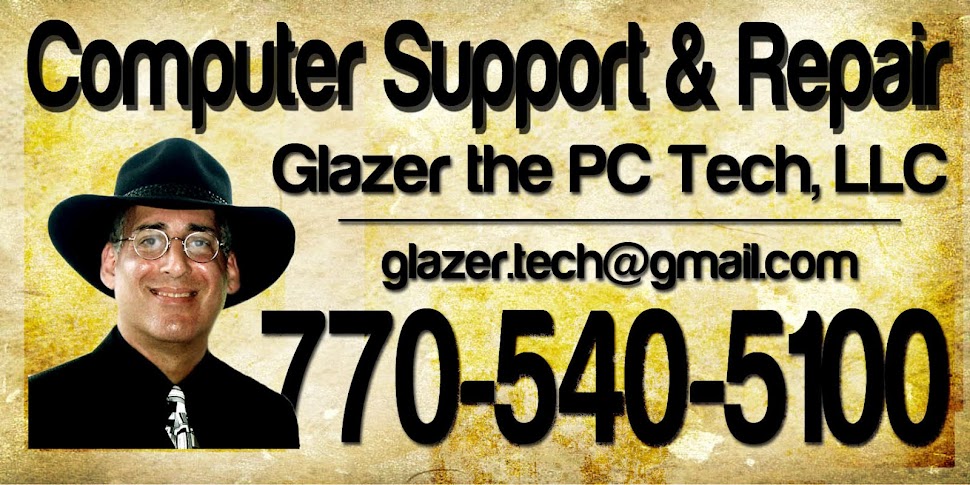For the moment, let's say your hard drive is a block of Swiss cheese. If you could somehow relocate all of the holes to one corner of the block, then theoretically you'd be able store something where all the holes are, right?
Yes, you could, and no, this is not the Cheese Corner. I am simply making a cheesy analogy about hard drives and defragmentation or defragging, as we geeks refer to it.
Defragging places data (the cheese) on one part of the drive and free space (the holes) on another. It also keeps individual files in good shape, while deleting remnants left behind from downloads, installations and abrupt shutdowns.
Naysayers believe that defragging is no longer necessary. I say it is. Even with the new generation of hard drives with their huge capacities, (Muenster drives?) defragging can still prove to be beneficial. Even a large drive will fill up eventually.
By keeping contiguous free disc space, all the data resides on one part of the drive. When you install a program to a clean, optimized drive, all of its folders go to the same locale. Thus, when you click an icon to call up that application, it will open more quickly because the files are all together.
In a badly fragmented hard drive, you could spend a minute or more watching the hourglass tumble, as the system looks for parts of your program that are scattered all over the drive.
I'm not saying your defrag utility should run nightly. However, to keep your computer running more efficiently, I would suggest you run it at least every couple of weeks, adding additional scans if the system becomes sluggish.
You can't over-defrag it and the scan can be paused or terminated at any time without incurring any damage to the file structure. All defrag utilities have buttons that will stop and pause the scan function, similar to that of your CD/DVD player.
The only downside to defragmenting is that as with scanning for viruses or malware, system resource use is high. It can be difficult to check your email or do anything else while a scan is running, defrag included.
There is a defragmentation utility incorporated into Windows, but there are better ones that you can get online, some at no cost. Many free utilities lack the bells and whistles that come with the paid versions. In this case, what you really need a scheduler so you can set it and forget it.
Windows 7 does allow you to schedule a defrag session, albeit with limited choices.
Technical support is also something you get only with the paid versions. As always, with the freebies, you're on your own. This shouldn't be an issue with a defrag program though; they are pretty straightforward and easy to use.
The more elaborate programs provide more options and let you choose how the disc is defragmented, from placement of free space to choosing varying degrees of disc optimization. Some let you choose where to allocate more resources, to the utility for a faster scan, or the system to let you continue to work while it scans.
Some may defrag the boot portion of the drive, making Windows load more quickly. Others will offer to defrag an external drive, not just the "C" or "D" drives, while a few will hone in on specific files of your choice, even the Windows Registry.
If you have an all-in-one utility suite, scrutinize the menus. You may find a defrag program built into it.
Smart Defrag from Iobit.com, Disk Defrag from auslogics.com and Defraggler from piriform.com are three of the top free defrag utilities available for download.
UltraDefrag is an Open Source (free) alternative that will also defrag the registry and page file. Find it and much more good free Open Source programs at sourceforge.net.
As always, also check download.com for more programs and see how their editors rate them and what users are saying about them.
Any of the paid versions will allow you to try before you buy. You may decide that $24 is not too much to pay for a good utility.
Keep in mind that your computer is an expensive piece of technology and you have valuable data on it. Sometimes it's worth getting a better mousetrap to keep it safe.
All defrag utilities will suffice, free or otherwise. Some may do it quicker, others more thoroughly, but using any is better than using none.
Should you decide to not buy or download one, there is always the Microsoft version. In all versions of Windows, find the native defrag utility in "All Programs," then go to "Accessories," then to "System Tools."
Before you run any defrag scan, it's best to ensure your system is in good shape. Clean the drive of junk files first; there's no point in organizing garbage.
Even if you have a terabyte drive with tons of free space, it's still a Gouda idea to run defrag every now and then.
Arthur Glazer is a freelance writer and computer technician in Gainesville. His column appears biweekly on the Business page.

No comments:
Post a Comment
Got a Comment - or a quick question...